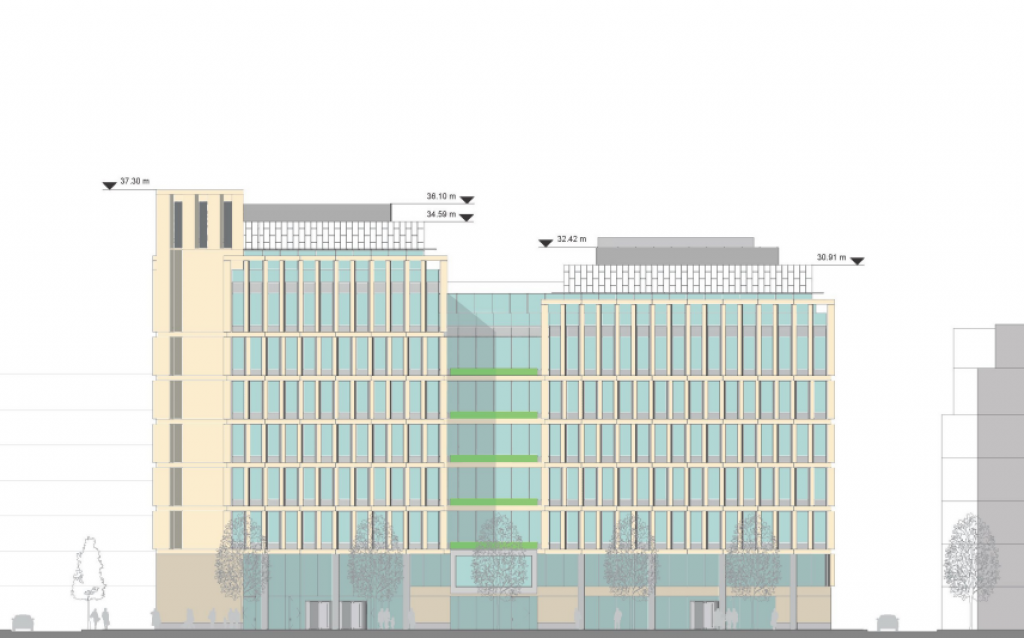SAVE condemns imminent demolition of historic Cambridge terrace in Conservation Area
SAVE Britain’s Heritage has condemned the imminent demolition of a Victorian terrace on the edge of Cambridge’s historic core as ‘wanton and unnecessary destruction’. Nos 32-38 Station Road, commonly known as Wilton Terrace, lie in a Conservation Area in the historic city, close to the city’s railway station.
The row of Victorian buildings have distinctive facades decorated with tiles and coloured brickwork and are a familiar and highly valued presence in the area. They are recognised as buildings of local importance by Cambridge City Council planning authority. The buildings have now been fenced off, and demolition is expected to begin imminently.
Thanks to a long and fiercely fought battle to prevent demolition, the redevelopment plans were turned down not once but three times by the Council’s planning committee. However, a controversial planning appeal decision overturned previous concerns and permitted the redevelopment in 2013, and the current proposals were approved in 2015.
More than 400 people wrote to the planning inspector in 2013, expressing their concerns about the plans for Wilton Terrace, and a local campaign group, the Friends of Wilton Terrace collected almost 1,500 signatures in a petition asking the Secretary of State to reverse the 2015 permission. Despite this concern and opposition, the approval was upheld.
Once demolished, the cleared site will make way for a huge new office building near Cambridge railway station on the gateway route to Cambridge’s historic heart. The freehold of the buildings is owned by ‘Jesus College (Station Road) Investments Ltd’, the property investment arm of Jesus College, Cambridge University. The developer, Brookgate, leases the site from Jesus College.
Seemingly ignoring the presumption that buildings that make a positive contribution to all or part of a Conservation Area should be retained, the planning inspector at appeal chose not to protect these handsome historic buildings in favour of the benefits associated with allowing offices to occupy the whole site.
In doing so, SAVE believes there has been a disastrous failure to use the very measures intended to safeguard the interest and character which historic buildings bring to their surroundings.
Francesca Leadlay, from the Friends of Wilton Terrace, said: “This is a real loss for Cambridge and we have always maintained that another option is possible rather than destroying a fine Victorian terrace. At the Public Inquiry, we proposed an alternative scheme that would incorporate the terrace and allow office development behind it. We urge Brookgate to keep some unique features including decorative tiles and cast iron fireplaces for the Museum of Cambridge, so that future generations can appreciate them.”
Henrietta Billings, Director of SAVE Britain’s Heritage, said: “The imminent demolition of buildings that make a positive contribution to Cambridge’s historic environment represents a wanton and unnecessary loss for a city that trades on its heritage and buildings. We are very concerned about the precedent that this loss of historic buildings with so-called protection could trigger.”
Marcus Binney, Executive President of SAVE Britain’s Heritage, said: "This destruction is a signal failure to use the measures which exist to protect buildings of note in Conservation Areas. This is especially lamentable in the city of Cambridge which has such a rich stock of historic buildings. Vigilance and persistence will be required to guard against the further erosion of the historic city.”
Note to Editors:
1. For more information please contact Henrietta Billings, Director, on 0207 253 3500 or Henrietta.billings@savebritainsheritage.org
2. Wilton Terrace was built in 1885 and is possibly the work of architect Richard Reynolds Rowe who is most famous for the Grade 2 listed Corn Exchange in Cambridge city centre. Rowe is regarded as one of the most influential Victorian architects in Cambridge. The four houses of the terrace have a unified design using coloured bricks and tiles as well as having a highly attractive roofline with stepped gables.
3. Permission for demolition of Wilton Terrace was granted on 12 February 2016. The office building which will replace it is part of the extensive CB1 development around the station in Cambridge.
4. SAVE Britain’s Heritage has been campaigning for historic buildings since its formation in 1975 by a group of architectural historians, writers, journalists and planners. It is a strong, independent voice in conservation, free to respond rapidly to emergencies and to speak out loud for the historic built environment.


